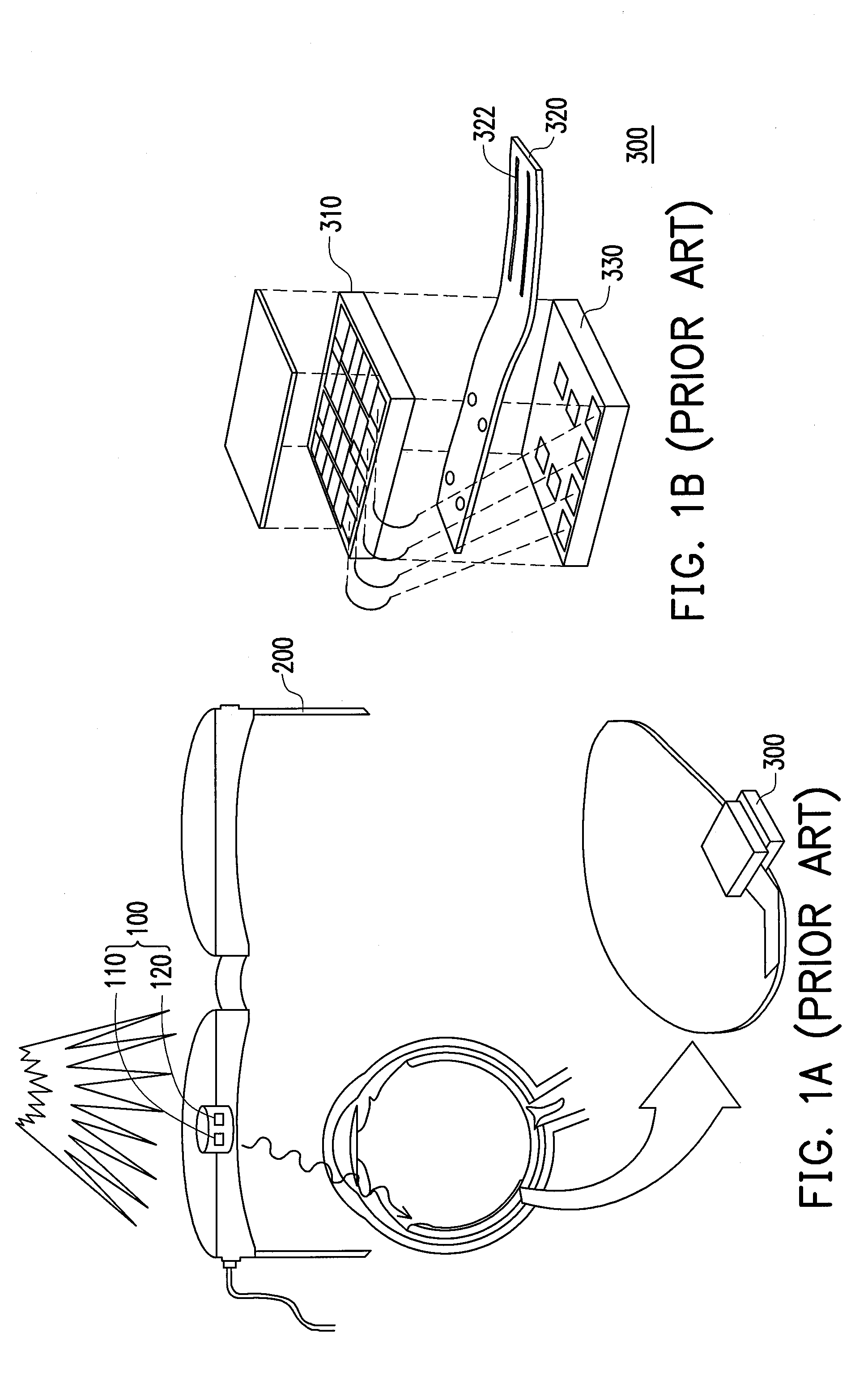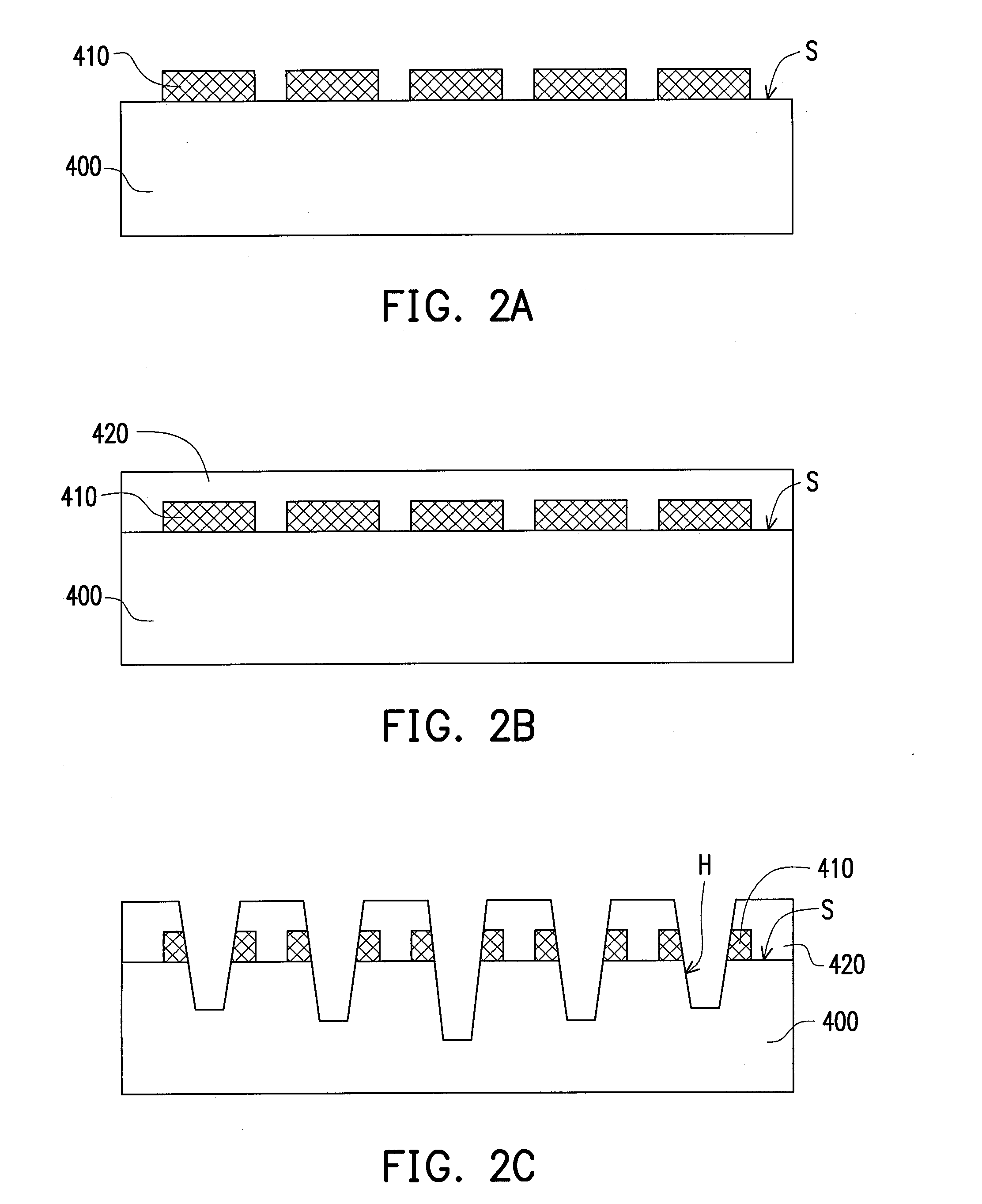Artificial optic nerve network module, artificial retina chip module, and method for fabricating the same
an optic nerve network module and chip module technology, applied in intraocular lenses, medical science, therapy, etc., can solve the problems of insufficient matching of i/o increments, inability to real-time transmit, and lower transmission rate, so as to reduce the risk of retina injury and insufficient flexibility of conventional artificial retinas
- Summary
- Abstract
- Description
- Claims
- Application Information
AI Technical Summary
Benefits of technology
Problems solved by technology
Method used
Image
Examples
Embodiment Construction
[0025]Reference will now be made in detail to the present preferred embodiments of the invention, examples of which are illustrated in the accompanying drawings. Wherever possible, the same reference numbers are used in the drawings and the description to refer to the same or like parts.
[0026]FIGS. 2A through 2J are schematic, cross-sectional diagrams illustrating the process flow for fabricating an artificial retina chip module according to an embodiment of the present invention. First, please refer to FIG. 2A, a signal processing chip 400 is provided for converting a light signal into an electronic signal, and outputting a suitable signal for stimulating optic nerves. The signal processing chip 400 includes a plurality of pads 410 disposed on a surface S thereof. As shown in FIG. 2B, a photo resist layer 420 is formed on the surface S of the signal processing chip 400 for covering the pads 410.
[0027]Then, as shown in FIG. 2C, a plurality of micro holes H is formed. Each of the mic...
PUM
 Login to View More
Login to View More Abstract
Description
Claims
Application Information
 Login to View More
Login to View More - R&D
- Intellectual Property
- Life Sciences
- Materials
- Tech Scout
- Unparalleled Data Quality
- Higher Quality Content
- 60% Fewer Hallucinations
Browse by: Latest US Patents, China's latest patents, Technical Efficacy Thesaurus, Application Domain, Technology Topic, Popular Technical Reports.
© 2025 PatSnap. All rights reserved.Legal|Privacy policy|Modern Slavery Act Transparency Statement|Sitemap|About US| Contact US: help@patsnap.com



